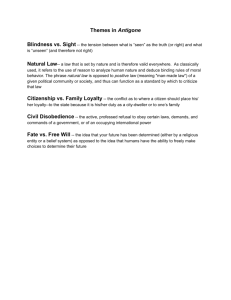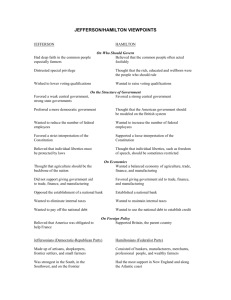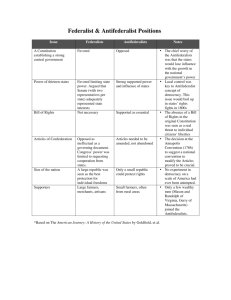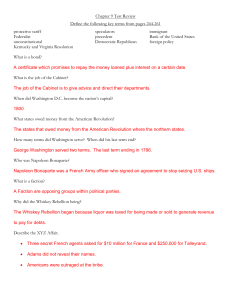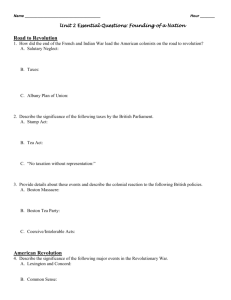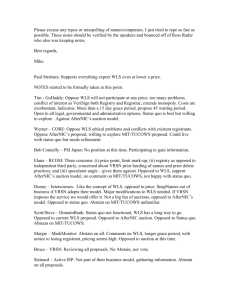Federalist Party vs. Democrat
advertisement
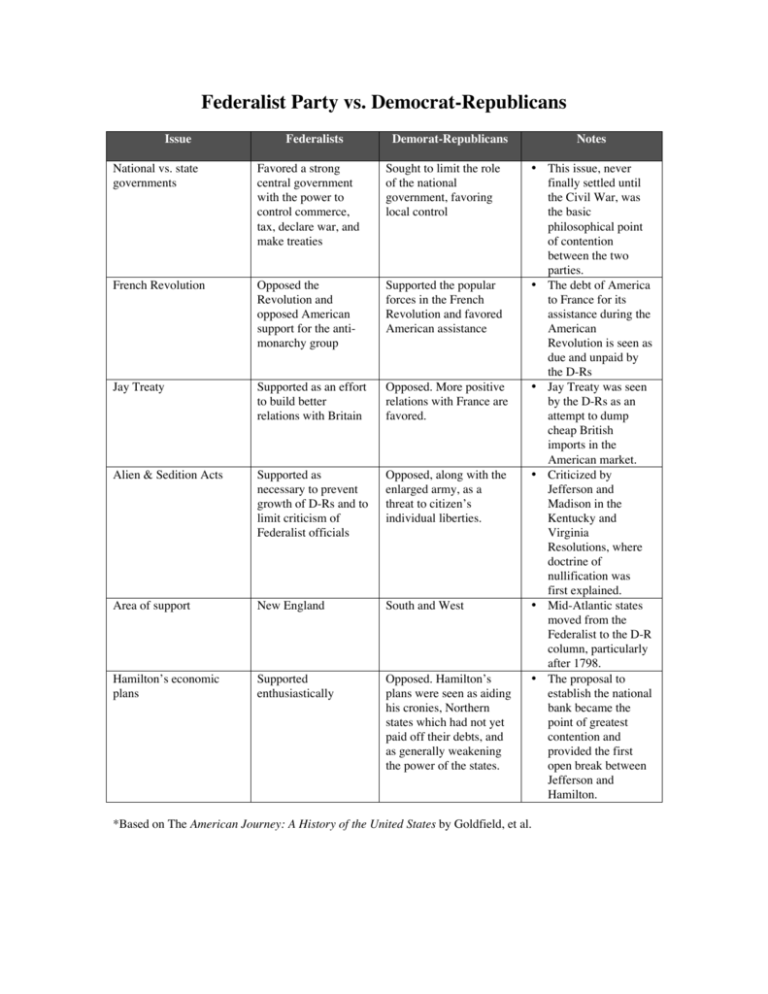
Federalist Party vs. Democrat-Republicans Issue Federalists Demorat-Republicans National vs. state governments Favored a strong central government with the power to control commerce, tax, declare war, and make treaties Sought to limit the role of the national government, favoring local control French Revolution Opposed the Revolution and opposed American support for the antimonarchy group Supported the popular forces in the French Revolution and favored American assistance Jay Treaty Supported as an effort to build better relations with Britain Opposed. More positive relations with France are favored. Alien & Sedition Acts Supported as necessary to prevent growth of D-Rs and to limit criticism of Federalist officials Opposed, along with the enlarged army, as a threat to citizen’s individual liberties. Area of support New England South and West Hamilton’s economic plans Supported enthusiastically Opposed. Hamilton’s plans were seen as aiding his cronies, Northern states which had not yet paid off their debts, and as generally weakening the power of the states. Notes • This issue, never finally settled until the Civil War, was the basic philosophical point of contention between the two parties. • The debt of America to France for its assistance during the American Revolution is seen as due and unpaid by the D-Rs • Jay Treaty was seen by the D-Rs as an attempt to dump cheap British imports in the American market. • Criticized by Jefferson and Madison in the Kentucky and Virginia Resolutions, where doctrine of nullification was first explained. • Mid-Atlantic states moved from the Federalist to the D-R column, particularly after 1798. • The proposal to establish the national bank became the point of greatest contention and provided the first open break between Jefferson and Hamilton. *Based on The American Journey: A History of the United States by Goldfield, et al.


